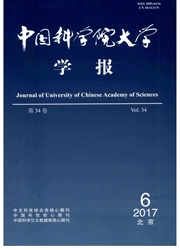

 中文摘要:
中文摘要:
水体的高光谱数据在提供大量信息的同时,其波段间存在很高的相关性,常规的统计方法反演水质参数不但不能充分利用这些信息,并且也不能很好的去相关,而偏最小二乘回归分析可以较好地解决这一问题.通过利用高光谱仪在石头口门水库进行反射光谱测量和同步水质采样分析,建立了叶绿素a和悬浮物含量的偏最小二乘回归模型.结果表明:该模型能较好的利用高光谱数据信息,各光谱波段自变量在最终模型中的系数大小,在一定程度上较符合叶绿素a和悬浮物的光谱吸收、散射特性;通过与常规的比值模型、一阶微分模型进行对比,偏最小二乘回归模型明显优于前两者,其各决定系数均高于0.7,因此估测效果较理想,可用于内陆二类水体的水色信息提取.
 英文摘要:
英文摘要:
In the water color remote sensing, hyperspectral data always provide lots of information. However, retrieval of water constituents based on conventional statistical methods fails not only to make full use of the information, but also to remove the heavy correlation between spectral band-variables. Partial least squares regression (PLS) can solve the problem properly. In order to validate its feasibility in inland Case-Ⅱ waters,a PLS model was established to estimate Chlorophyll-a (Chl-a) concentrations and total suspended sediments(TSS) contents using hyperspectral data obtained from April to October in 2006 in the Reservoir Shitoukoumen. The results showed that: PLS model could make a relatively full use of hyperspectral data. Coefficients of different band-variables in the final model reflected absorption and scattering properties of Chl-a and TSS. Compared with bands ratio model and firstderivative reflectance model, PLS model overmatched the former two with high determination coefficients and satisfactory estimating results. It indicates that PLS is suitable for the inversion of water constituents in inland water Case-Ⅱ.
 同期刊论文项目
同期刊论文项目
 同项目期刊论文
同项目期刊论文
 期刊信息
期刊信息
